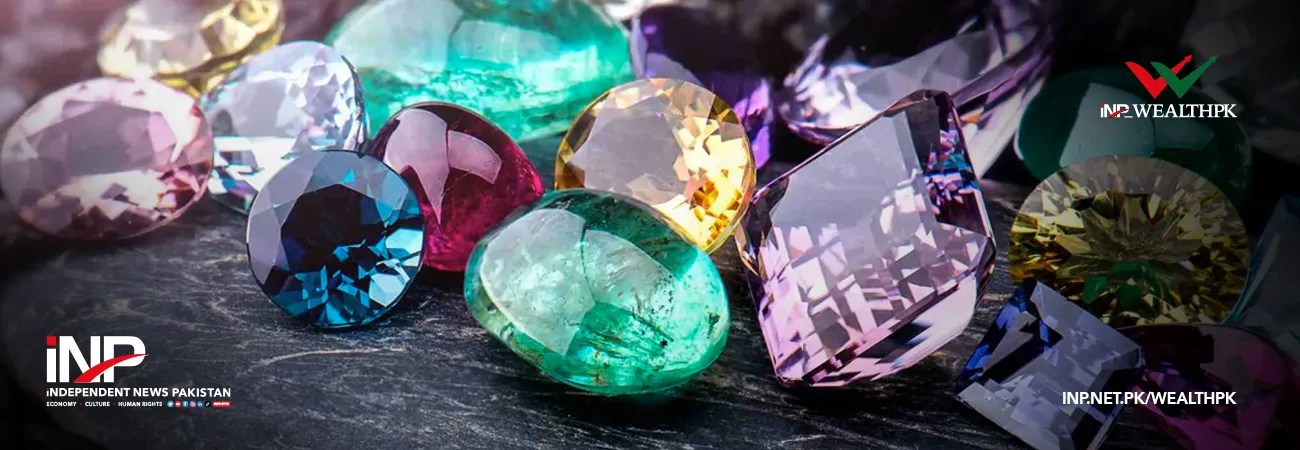INP-WealthPk
Faiza Tehseen
Pakistan’s gemstone industry needs promotion under the government patronage in a coordinated way. This can not only create a wealth of job opportunities but also help pay off the country’s mounting foreign debt. Chairman of All Pakistan Commercial Exporters Association (APCEA) for rough and unpolished gemstones Minhaj-ud-Din Shah made the remarks in an interview with WealthPK. He said tactful planning for value addition and marketing of gemstones could fetch a fortune for cash-strapped and indebted Pakistan. He said APCEA was a major stakeholder in Pakistan playing a vital role in the promotion and development of the gemstone industry. “In FY2021-2022, the export of gemstones through APCEA was worth USDTop of Form7.60 million. So, APCEA is the name of our struggle to represent Pakistani commercial exporters and merchants of unpolished, precious, and semi-precious gemstones. “Currently, Pakistan is in dire need of increasing the exports and enhancing the foreign exchange index. So, we are trying hard to enhance the exports of value-added products. The million-dollar potential in the gemstone sector of Pakistan is unique across the globe. Unfortunately, it’s always neglected compared with other countries,” he said.
Quoting an example, Syed Minhajuddin Shah said, “Thailand has no great mineral deposits of its own and most of them are brought to its markets from other places. Once in Thailand, these mineral aggregates are crafted well and value is added to their natural worth. As a result, the exports of value-added minerals from Thailand are more than USD200 billion. “The Government of Pakistan must follow the Thai approach. If they can earn billions, why Pakistan is lagging behind, especially when it is a mineral-rich country with natural gemstone deposits worth trillions of dollars,” he added. Continuing the discussion, the APCEA chairman said Pakistan was rich in unique natural mineral sources. Top precious stones like emerald, ruby, sapphire, and Topaz are available in the country. The Katlang pink topaz of Mardan district of KP is nowhere across the globe. Emeralds from Swat, Shangla, and Chitral are just matchless. “This situation could be made better with the coordination of government departments concerned. If it happens, then unskilled labour can be trained in the government institutes to avoid the mining flaws. Unskilful mining also damages a huge quantity of precious stones. For example, blasting method is still in use in a few areas that damages a good quantity of gemstones. “Gemstone exports are far lesser than the real potential Pakistan possesses.
It is important for the government to have consultation and discussion sessions with platforms like APCEA and other trade and business fellows related to this field. All weaknesses of this sector should be discussed openly,” he said. Talking about the Chinese contribution, Minhaj said business ties with China will benefit Pakistan. “Most of our buyers are Chinese. Nephrite from the Mohmand district of KP is highly appreciated.” Concluding the discussion, he said, “The government must conduct an accurate geological survey of all the gemstone deposits. Education and training concerning this field, including modern research and development, are also important. It is necessary to develop a proper infrastructure on war footing to reach the sources. “Proper regulatory reforms, tax incentives, financial support, security measures, legal framework, community engagement, and certification concerning safety and environmental issues are key features to check. After proper marketing and value addition, the government must promote exports by collaborating with the international bodies,” he said. The global gemstone market this year is worth USD32.38 billion and is expected to be worth USD55.96 billion by the year 2033 at a compound annual growth rate (CAGR) of 5.6%. According to a research report prepared by the Centre for Strategic and Contemporary Research, Pakistan has the 5th largest gemstone deposits.
Credit: INP-WealthPk













